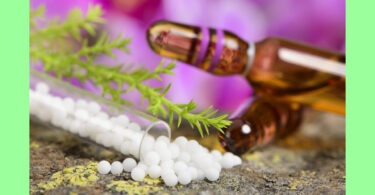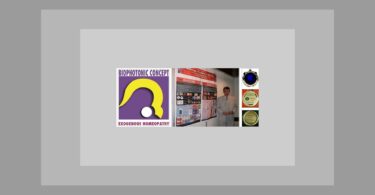ABSTRACT: Autoimmunity can be defined as the presence of immune responses against the self. It may be a harmless phenomenon, identified by the presence of low titre auto antibodies. Autoimmune disorders are one of the most difficult diseases to treat. In homoeopathy, there are medicines which can treat autoimmune disorders if the simillimum is prescribed.
Repertory plays a major role in the treatment because it has plenty of rubrics related to autoimmune disorders. Vitiligo is one of the common autoimmune disorders throughout the world.
KEY WORDS: Autoimmune diseases, Vitiligo, Homoeopathy
INTRODUCTION: The immune system protects human being from diseases. Autoimmune diseases can affect any part of the body or more than one organ at a time, so a person may have more than one autoimmune disorder at a particular time. More than 80 autoimmune diseases have been identified. Some are well known such as DM-1, RA, Vitiligo, SLE, psoriasis while some are rare to diagnose.
ETIOLOGY
- Genetic – Studies show family history for vitiligo in 6.25-38% of patients. Individuals who maintain recessive homozygosity at these loci are affected by vitiligo.
- Self Destruction – Formation of Hydrogen peroxide (H2O2), certain tyrosine analogues and intermediates in melanin synthesis are thought to cause the destruction of melanocytes.
- Autoimmune Hypothesis – Vitiligo is considered as an autoimmune disease due to:
- The presence of melanocytes auto-antibodies.
- Associated with other autoimmune disorders.
- Auto-antibodies in first degree relatives of patients
- Associated with HLA – DR4, HLA-DR1.
- Melanocytes Destruction – Pathogenesis of non-segmental vitiligo as the result of a chronic detachment and loss of melanocytes resulting from altered melanocyte responses to trauma and other stressors.
CLINICAL FEATURES
- Typical vitiligo maculae have a chalky or milky white colour, round to oval in shape often with convex margins which are usually well defined, varying from few millimetres to many centimetres in diameter.
- Areas subjected to repeated friction and trauma are likely to be affected for example feet, elbow, knees and ankle.
- Rarely itching in the absence of sunburn.
- Koebner phenomenon- Damage to the normal skin frequently results in an area of depigmentation.
- Quadrichrome refers to fourth colour—perifollicular or marginal pigmentation seen in some cases of re-pigmenting Vitiligo.
- Inflammatory Vitiligo has an erythematous raised border similar to the one sometimes seen in pityriasis versicolour.
- Vitiligo usually associated with diseases like Thyroid abnormality, pernicious anaemia, systemic lupus erythematous, diabetes mellitus, inflammatory bowel disease, RA, etc.
REPERTORIAL APPROACH
Rubrics Based on Location: From Kent Repertory
Face- Discoloration- White Spot: Ars., Merc., Nat-C.
Genitalia- Spots- Scrotum- White: Merc., Thuj.
Extremities- Discoloration- Upper Limbs- White- In Spot: Apis.
Extremities- Discoloration – Thigh- White, In Spot: Calc.
Extremities- Discoloration- Leg- White Spot: Calc.
Extremities- Discloration- Ankle- White In Spot: Calc.
Extremities- Discloration- Foot- White In Spot: Apis.
Skin- Discoloration- White-Spot: alum, am-c, ars, aur, berb, calc, carb-an, coca, merc, nat-c, nit-ac, phos, sep, sil, sulph.
RUBRICS FROM MURPHY’S REPERTORY
Vitiligo, leukoderma, general – alum, am-c, ant-t, ARS, ars-s-f, aur, berb, calc, calc-f, calc-sil, carb-ac, carb-an, carc, cob-n, coca, graph, kali-I, kres, lyc, med, merc, mica, nat-c, nat-m, nit-ac, ozone, phos, pip-m, pitu-a, pitu-p, prot, pyrar, sel, SEP, SIL, sulph, sumb, syph, thuj, zinc, zinc-p.
RUBRICS FROM BOERICKE’S REPERTORY
LEUCODERMA (See Face, pale.) – Ars. s. fl., Nat. m., Nit. ac., Zinc. p.
FACE – Pale – Abrot., Acet. ac., Ant. t., Apis, Arg. n., Ars., Bell., Berb. v., Bor., Calc. c., Calc. p., Camph., Carbo v., Cina, Cinch., Cupr. m., Cycl., Dig., Ferr. ac., Ferr. m., Ferr. Mur, Ipec., Kali c., Lach., Lecith., Med., Merc. c., Merc. d., Morph., Nat. c., Nat. m., Nit. ac., Phos. ac., Phos., Plumb. m., Puls., Pyr., Santon., Sec., Sep., Sil., Spit., Tab., Ver. a., Zinc. m.
THERAPEUTICS
- NAT-M – Greasy, oily especially on hairy parts. Dry eruptions especially on the margins of the hairy scalp and bends of points Skin-raw, red, inflamed, worse-eating salt, at seashore. Greasy skin, desire salt, bitter, burning thirst, hot patient.
- NIT-AC – Zig-zag, irregular edges, base look like raw flesh. Exuberant granulations, Papules worse on forehead, large jagged, bleeds on washing. Sensitive splincter like pain, Agg – Evening, night, cold climate also in hot weather. Better – while riding in a carriage.
- ARS-SULFH FLAVUM – Leucoderma and squamous syphilitic diseases. Sciatica and pain around the knee. Associated with sense of needle pricks from within outwards in the chest and especially right side also on forehead
- AMMI VISNAGA – Relieves issues of Vitiligo and reduces associated anxiety. Associated with treatment of spasmodic bodily movements and in the treatment of angina pectoris.
- PSOROLIA COR – It helps in the treatment of Leukoderma, Leprosy and skin diseases. It is also helpful for treating the scorpion sting and snake bites as it has antibacterial and antioxidant properties.
- ARSENICUM ALB: Suited to psoric constitutions, nervous temperaments with anxiety, exhaustion and restlessness. Anxiety about health, despair of recovery, fastidious, extreme nervous and anxious, full of worries about trifles, domineering and demanding. Great anguish and restlessness. Sudden great weakness. Unquenchable thirst. Skin oversensitive, suppressed eruptions. Brownish white spots in skin. White patches; dry, rough skin.
SEPIA: Suited to nervous asnd delicate constitution. Yellow saddle across nose, irritable, faint from least exertion, leuco-phlegmatic constitution. Indifferent to loved ones. Aversion to occupation, to family. Unresponsive towards family and life. Dread to be alone. Weeps when telling symptoms. Weeping worse from consolation. Self pity. Delicate skin.
SILICIA: Demineralised constitution. Constitutions that suffer from deficient nutrition due to lack of assimilating power. Imperfect assimilation and consequent defective nutrition. Oversensitive physically and mentally. Nervous, irritable with dry skin. Want of grit, moral or physical. Tendency to easy exhaustion. Loss of self confidence. Faint hearted, anxious. Performance anxiety, timidity and want of confidence about appearing in public. Bashful. Conscientious about trifles. Yielding disposition. Fear of needles, pins and sharp objects. Obstinate, head strong. Fixed ideas. Patient is cold, wants plenty of warm clothing. Skin is delicate, pale, and waxy; a tendency to excessive perspiration.
SULPHUR: Persons of psoric temperament, nervous, quick tempered. Dirty looking persons who are always speculating on religious or philosophical subjects. Delusions, thinks rags beautiful things, that he is immensely wealthy. Very selfish, no regard for others. Mental fatigue and absent-mindedness. Great desire for sweets. Skin disorders after local application.
THUJA: Ailments from bad effects of vaccination; from suppressed or maltreated gonorrhea; hydrogenoid constitution; lymphatic temperament; fleshy persons; dark complexion; black hair. Fixed ideas. Rapid exhaustion & emaciation. Chilly medicine. Unhealthy skin; brown or brownish white spots here ans there.
REFERENCES
- Autoimmune Diseases [Online] [Accessed on 3 September 2022] Available from: URL: https://medlineplus.gov/autoimmunediseases.html
- Malhotra N, Dytoc M. The pathogenesis of vitiligo. J Cutan Med Surg. 2013; 17(3):153–72 Vitiligo: Management and Therapy – Google Books
- Munjal YP, Sharm SK. API Textbook of Medicine, Two Volume Set. JP Medical Ltd; 2012 May 18. API Textbook of Medicine, Ninth Edition, Two Volume Set – Y P Munjal, Surendra K Sharm – Google Books
- Kent JT. Repertory of the Homoeopathic Materia Medica. Enriched Indian edition Reprinted from 6th American ed. 59th Impression. New Delhi, India: B. Jain Publishers Pvt. Ltd; 2020. p.363, 712, 979, 982, 983, 1307.
- Murphy RR. Homeopathic medical repertory: A modern alphabetical repertory. Hahnemann Academy of North America; 1993. p. 1961.
- Boericke W. Pocket Manual of Homoeopathic Materia Medica & Repertory: Comprising of the Characteristic and Guiding Symptoms of All Remedies (clinical and Pathogenetic [sic]) Including Indian Drugs. B. Jain publishers; 2002. Pocket Manual of Homoeopathic Materia Medica – William Boericke – Google Books







Great article and thanks to Dr
Padhy for the same. I would like to add that my mother (60) started developing some vitiligo on her face, and orally supplementing Vit-E 400 mg alternate days for 2 months cured it, although the treating allopathic doctor was surprised, since it’s autoimmune disorder (and hence not curable) to them. Probably, homeopathically potentiated vit-E might have some potential in the future for vitiligo cure.